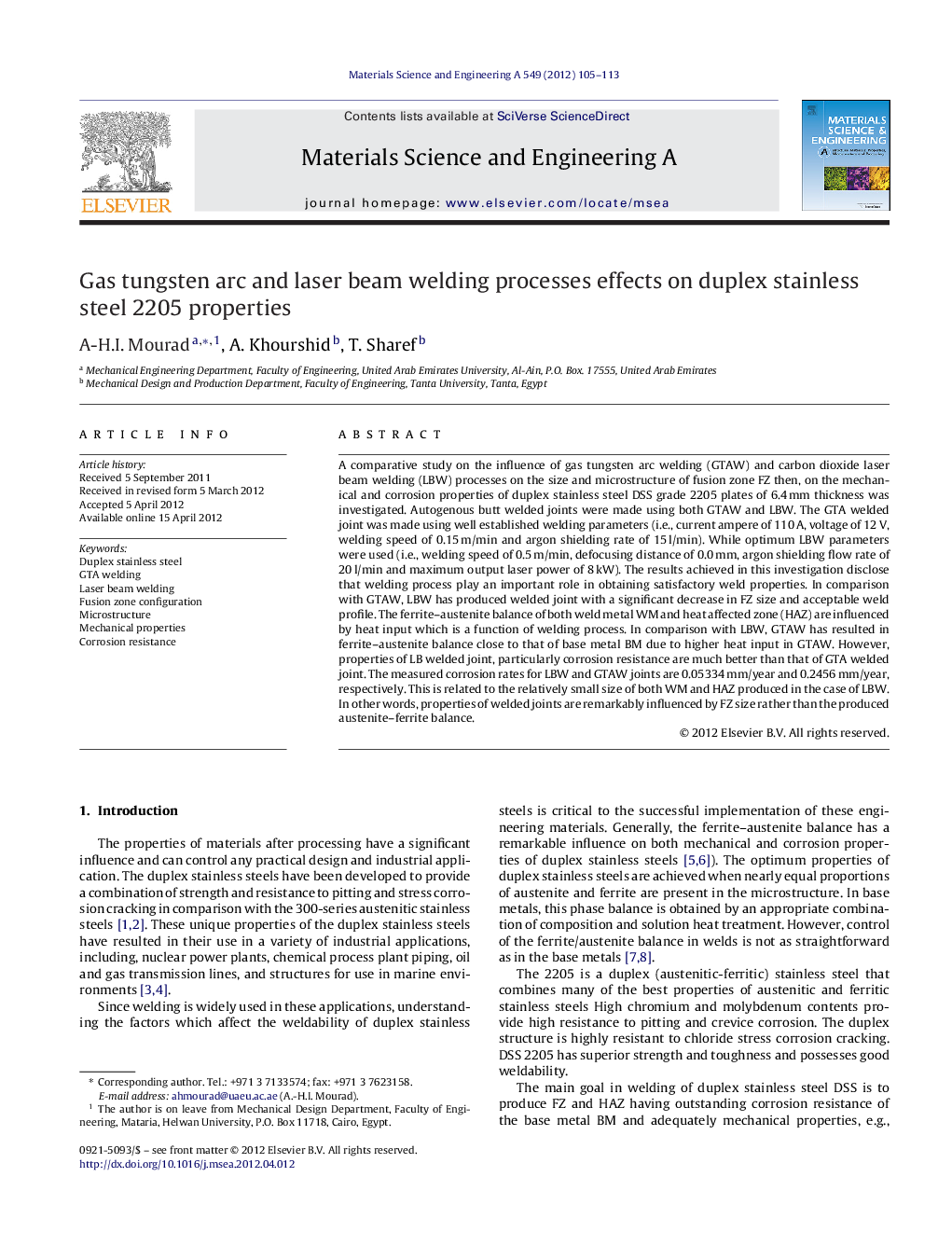| Article ID | Journal | Published Year | Pages | File Type |
|---|---|---|---|---|
| 1577219 | Materials Science and Engineering: A | 2012 | 9 Pages |
A comparative study on the influence of gas tungsten arc welding (GTAW) and carbon dioxide laser beam welding (LBW) processes on the size and microstructure of fusion zone FZ then, on the mechanical and corrosion properties of duplex stainless steel DSS grade 2205 plates of 6.4 mm thickness was investigated. Autogenous butt welded joints were made using both GTAW and LBW. The GTA welded joint was made using well established welding parameters (i.e., current ampere of 110 A, voltage of 12 V, welding speed of 0.15 m/min and argon shielding rate of 15 l/min). While optimum LBW parameters were used (i.e., welding speed of 0.5 m/min, defocusing distance of 0.0 mm, argon shielding flow rate of 20 l/min and maximum output laser power of 8 kW). The results achieved in this investigation disclose that welding process play an important role in obtaining satisfactory weld properties. In comparison with GTAW, LBW has produced welded joint with a significant decrease in FZ size and acceptable weld profile. The ferrite–austenite balance of both weld metal WM and heat affected zone (HAZ) are influenced by heat input which is a function of welding process. In comparison with LBW, GTAW has resulted in ferrite–austenite balance close to that of base metal BM due to higher heat input in GTAW. However, properties of LB welded joint, particularly corrosion resistance are much better than that of GTA welded joint. The measured corrosion rates for LBW and GTAW joints are 0.05334 mm/year and 0.2456 mm/year, respectively. This is related to the relatively small size of both WM and HAZ produced in the case of LBW. In other words, properties of welded joints are remarkably influenced by FZ size rather than the produced austenite–ferrite balance.
► LBW results in considerable variation in the ferrite–austenite balance of FZ. ► LBW produces smaller FZ size than GTAW. ► The effect of FZ size is more pronounced than that of ferrite–austenite balance. ► Satisfactory mechanical properties were obtained using both GTAW and LBW. ► LBW process has produced welded joint properties comparable to BM.
